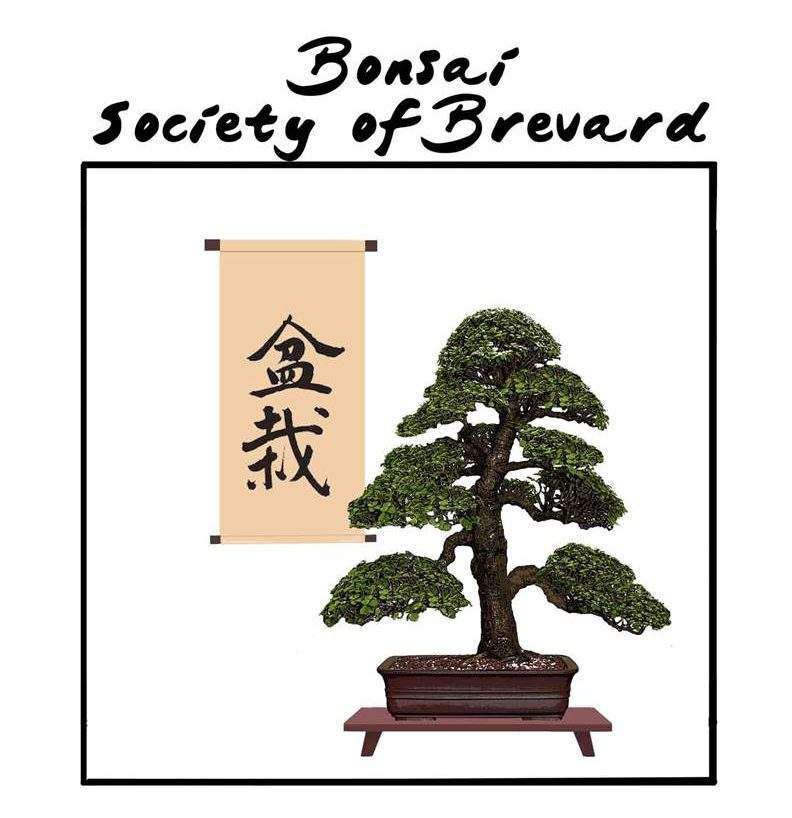This continuation of bonsai care for December is authored by Jim Smith and originally printed in Florida Bonsai Magazine in 1986. It has been updated by Jim and is reprinted with both his permission and that of Florida Bonsai Magazine. The care guidance is suitable for Zones 9b and 10a.

Bonsai in Brevard (Zone 9b and Zone 10a)
The temperature is getting cooler and the air dryer. The mornings can be chilly to very cold. On Christmas Day we have had one of our coldest days on record. Many fine bonsai were lost because we were not prepared. You should already have made plans to protect your tender plants in the event of a frost or freeze.
Frost usually forms on a clear calm night when the temperature drops into the thirties. It may occur in only one area of your yard so that you should check your plants if you are in doubt. There are several ways to protect your plants from frost.
- Move them to a place that you know is frost free such as a shade house, porch, car port, or under your benches.
- Cover your plants with any material that will retain heat such as cloth blankets, cardboard boxes or black plastic, (clear plastic will not work).
- Wash the frost from the plant just before the sun shines on them. If a hard freeze is predicted, your plants will need more protection. If the temperature is expected to be below 32 for several hours or more, heat must be provided.
Watering
Continue to monitor your bonsai for their watering needs. You will notice that your plants will require much less water during the next few months. If any of your plants do not drain well, be particularly careful that they do not get too much water.
Fertilizer
Continue to fertilize to maintain the health of the tree.
Insects and Diseases
Continue to inspect your plants for mites, especially Junipers. Thrips can also be a problem now. These are the insects that cause the leaves of the Ficus Nitida to curl. They can also cause flower buds to drop. Although scale is usually not a problem, they can cause the leaves to turn yellow and drop. Severe infestation can cause heavy defoliation.
Pinching
Continue to pinch all bonsai that are growing. As long as your plants continue to grow, keep pinching.
Wiring
Continue to wire. It is much easier to wire a branch that is bare than one that is full of foliage. Since these trees will not be growing until Spring, the wires can be left on for a longer time. It takes longer to train a bonsai by the “Clip and Grow” method than it does by wiring. Learn to wire, you will have better bonsai in less time. Let the soil dry (slightly moist) before wiring. Branches are more flexible when they are not filled with water.
Potting
Since much of your potting will be done in the next few months, now is the time to prepare your potting soil. Here are a few recipes you may want to try.
| Plant | Mulch | Sand | Turface |
|---|---|---|---|
| Needle leaf | 2 | 1 | 1 |
| Broadleaf and Tropicals | 2-4 | 1-2 | 3-6 |
- Mulch – Can be peat moss, tree bark, wood chips, etc.
- Sand – Sharp sand, crushed rock, lava, etc.
- Turface – Low fired crushed clay.
- Other – You may also wish to incorporate a slow release fertilizer and, if ants are a problem, a pesticide.
Bonsai Society of Brevard
For more detailed information contact our Brevard based Bonsai club.
The Bonsai Society of Brevard is one of the many clubs within the Bonsai Societies of Florida.
